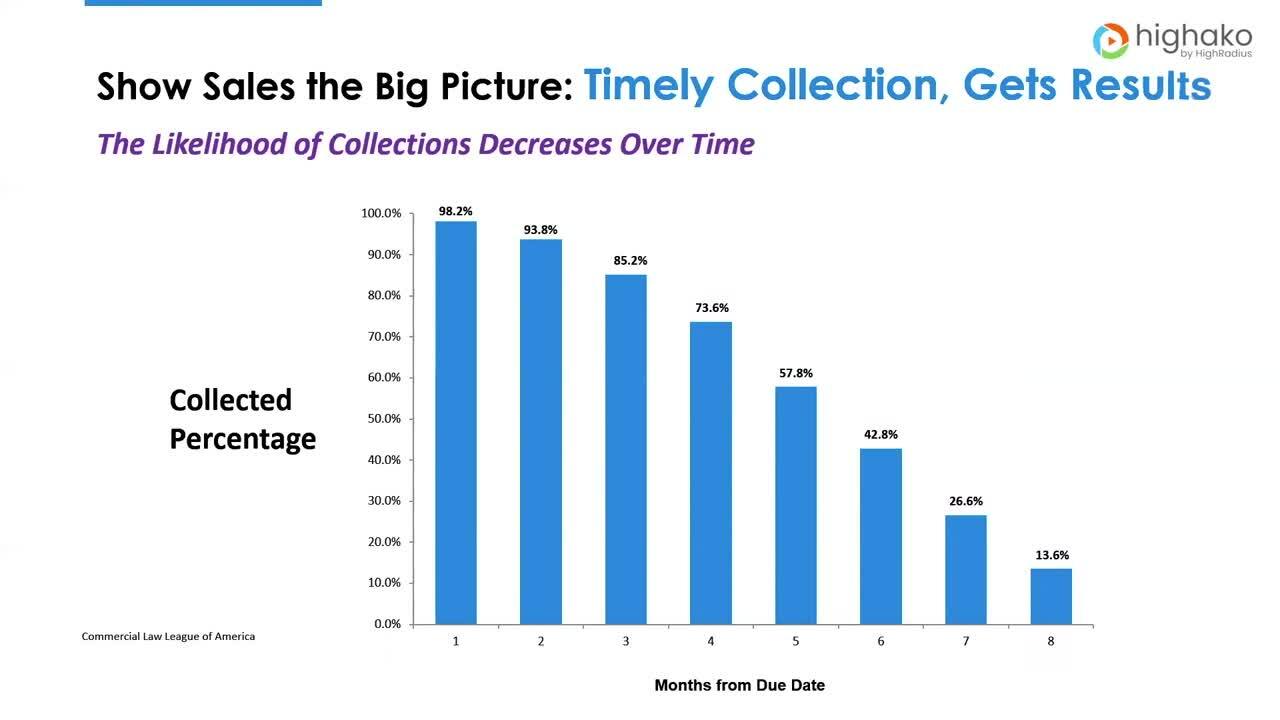
Anyone in a credit and collections role must realize sales is one of their primary responsibilities.
If you are in Credit and Collections, you sell underlying policies, procedures, and your decisions to internal stakeholders and customers. This could involve convincing a Sales Rep that security, or cash in advance is a requirement to make a sale. A customer may need to be convinced that their credit limit is not just an advisory, but an actual limit. Collectors work daily to sell customers on the expectation that terms must be adhered to. Invoices are to be paid according to terms.
Always start with the original agreement.
Customers have agreed to the price and terms of sale in a contract, purchase order, or another form of agreement. For internal stakeholders, your company has documented policies, procedures, and forms. When you get pushback from a customer, ask, has your company met all its commitments? If so, all the customer needs to do is meet their commitment to pay according to the terms agreed to.
If an internal stakeholder is questioning a decision, confirm your position is supported by your company's priorities and policies. Always listen, then offer options, or exceptions if approved by whoever is authorized to do so.
Employ the following ten steps salespeople use to sell your decisions:
- Be prepared and know your goal: Understand the underlying facts and history. Anticipate possible objections. Have relevant documents and an answer ready. Preparation gives you the edge. Plan both a primary goal - what you are hoping for, and your final position - the least you can accept.
- Assume you will reach an agreement: Have you ever met a successful salesperson who went into a sales call assuming the customer will say No? "Assuming the sale" will bring confidence to your voice. It will help you control the conversation.
- State your value proposition: It starts by trying to understand the other side's needs. People are motivated by what is in their self-interest, or of interest to their employer. Emphasize how your value proposition relates to the other side's interests. It could be a customer wanting a continued product or service flow, profit opportunity, or a good credit standing. A Sales Rep is typically interested in continued commissions. Steering a Sales Rep from a high-risk account exposure to a long-term customer, is doing them a favor. In the end, it is all about alternatives and consequences.
- Ask for a commitment then strategically pause: State clearly what you want: Set an expectation and why. This will focus the conversation on a more structured response. Silence is power. When you pause and wait for a response the silence can be deafening. Wait as long as it takes for a response. Whoever speaks is likely to make a concession, raise objections, or agree to the proposal.
- Work through any objections: Think of objections as bushes the other person can hide behind. You are armed with a chainsaw and need to go after every bush until there is nowhere else for them to hide.
- Ask probing questions and listen to every word: A probing question is one that cannot be answered with yes or no. Think before you speak, formulate each question to force the other side to tell you a story. Effective listening can be far more important than simply stating your position. Take notes, what is the root cause of the objection? Some objections are pure stalling tactics. Others may signal serious issues that need to be resolved and dealt with quickly, or surface an underlying danger that the other side's commitments cannot be trusted.
- Ask again for a commitment: State clearly what you want from the other side and what you are agreeing to. Then pause and be silent. Wait for a response. More clarification may be needed.
- At an impasse leverage a track record of success: You explain, "We have made so much progress today. Certainly, we can get through the rest of this together too. Remember your value proposition!
- Take a break if the conversation becomes circular or is not going your way: Make an excuse to take a break. A break in the discussion allows time for emotions to subside and provides time to regroup.
- Once there is an agreement, restate the document: Be sure you both understand the actions each is responsible for. Follow-up with a written confirmation.
Watch our course on Credit Policy Training for Trade Creditors which gives a detailed perspective on the benefits of an integrated credit, collections, and dispute management policy as well as a framework to build the credit policy.
instructor
